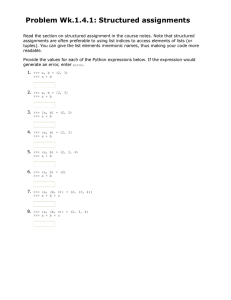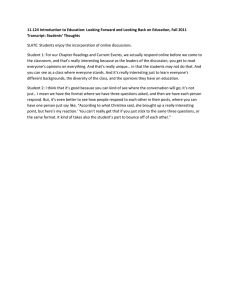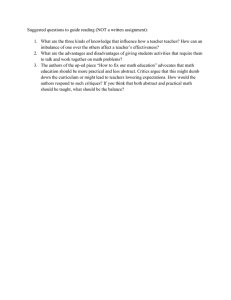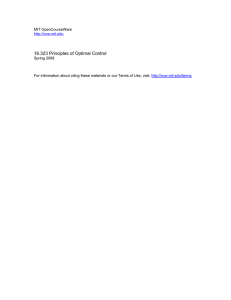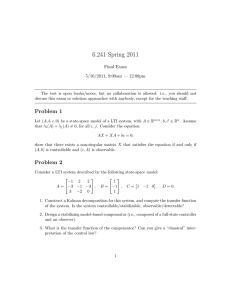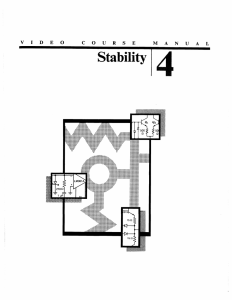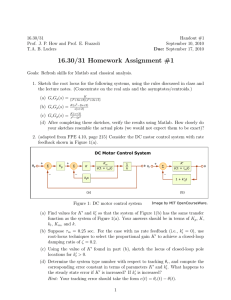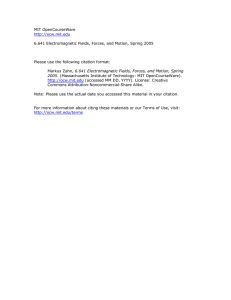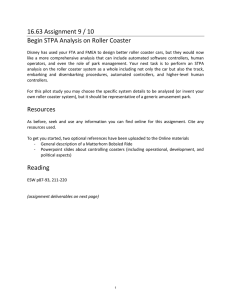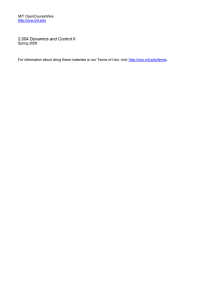Document 13352569
advertisement
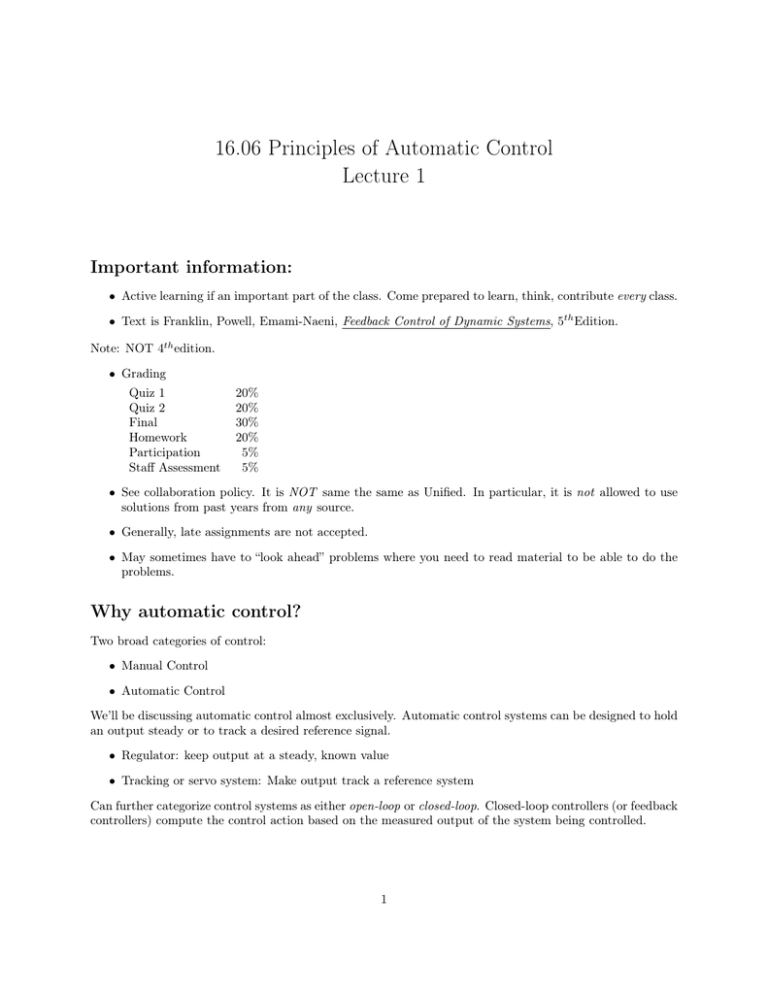
16.06 Principles of Automatic Control Lecture 1 Important information: • Active learning if an important part of the class. Come prepared to learn, think, contribute every class. • Text is Franklin, Powell, Emami-Naeni, Feedback Control of Dynamic Systems, 5th Edition. Note: NOT 4th edition. • Grading Quiz 1 Quiz 2 Final Homework Participation Staff Assessment 20% 20% 30% 20% 5% 5% • See collaboration policy. It is NOT same the same as Unified. In particular, it is not allowed to use solutions from past years from any source. • Generally, late assignments are not accepted. • May sometimes have to “look ahead” problems where you need to read material to be able to do the problems. Why automatic control? Two broad categories of control: • Manual Control • Automatic Control We’ll be discussing automatic control almost exclusively. Automatic control systems can be designed to hold an output steady or to track a desired reference signal. • Regulator: keep output at a steady, known value • Tracking or servo system: Make output track a reference system Can further categorize control systems as either open-loop or closed-loop. Closed-loop controllers (or feedback controllers) compute the control action based on the measured output of the system being controlled. 1 MIT OpenCourseWare http://ocw.mit.edu 16.06 Principles of Automatic Control Fall 2012 For information about citing these materials or our Terms of Use, visit: http://ocw.mit.edu/terms.
